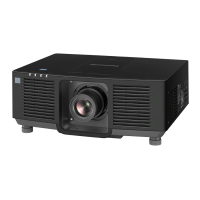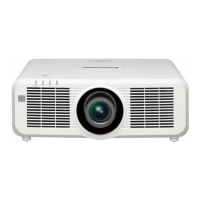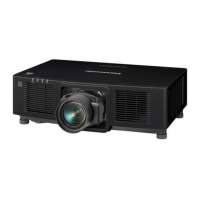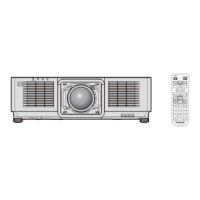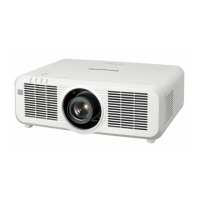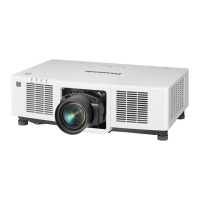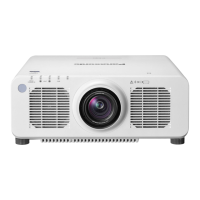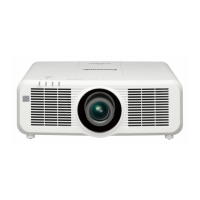Chapter 1 Preparation — About your projector
ENGLISH - 33
r Connecting terminals
2 3
4 5
1
6 7 8 9 10
1 <USB> terminal
This is a terminal to connect the USB memory when using the
data cloning function or rmware update function.
(x pages 225, 231)
This is also the terminal to connect the optional Wireless
Module (Model No.: AJ-WM50 Series) when the projector is
connected via wireless LAN. (x page 180)
2 <SDI IN> terminal
This is a terminal to input the SDI signal.
3 <HDMI IN 1> terminal / <HDMI IN 2> terminal
These are the terminals to input HDMI signal.
4 <DIGITAL LINK> terminal
This is a terminal to connect a device that transmits image
signal via the LAN terminal. Also, this is the LAN terminal to
connect to the network.
5 <LAN> terminal
This is the LAN terminal to connect to the network.
6 <DC OUT> terminal
This is the USB terminal dedicated for power supply. (DC 5 V,
maximum 2.0 A)
Use this terminal when a power supply is required to wireless
display adapters and wireless LAN/Ethernet converters, etc.
7 <SERIAL/MULTI SYNC IN> terminal
This is the RS-232C compatible terminal to externally control
the projector by connecting a computer.
This terminal is also used to connect multiple projectors when
balancing the contrast as a combined screen or synchronizing
the eects using the shutter function including the fade in/fade
out with a system using multiple projectors.
8 <SERIAL/MULTI SYNC OUT> terminal
This is a terminal to output RS-232C compliant signal input to
the <SERIAL/MULTI SYNC IN> terminal.
This terminal is also used to connect multiple projectors when
balancing the contrast as a combined screen or synchronizing
the eects using the shutter function including the fade in/fade
out with a system using multiple projectors.
9 <REMOTE 1 IN> terminal
This is a terminal to remotely control the projector using the
external control circuit.
10 <REMOTE 2 IN> terminal/<REMOTE 2 OUT> terminal
These are terminals to connect the remote control for serial
control in a multiple projector environment.
Attention
f When a LAN cable is directly connected to the projector, the network connection must be made indoors.
f When connecting a USB memory to the <USB> terminal, also refer to “Using the USB memory” (x page 73).
f To transmit the Ethernet and serial control signals using the <DIGITAL LINK> terminal, set the [NETWORK] menu → [ETHERNET TYPE] to
[DIGITAL LINK] or [LAN & DIGITAL LINK].
f To transmit the Ethernet signal using the <LAN> terminal, set the [NETWORK] menu → [ETHERNET TYPE] to [LAN] or [LAN & DIGITAL
LINK].
f The <DIGITAL LINK> terminal and the <LAN> terminal are connected inside of the projector when the [NETWORK] menu → [ETHERNET
TYPE] is set to [LAN & DIGITAL LINK]. Do not directly connect the <DIGITAL LINK> terminal and the <LAN> terminal using a LAN cable.
Construct the system so that it is not connected to the same network via the peripherals such as the switching hub or the twisted-pair-cable
transmitter.
f When the [PROJECTOR SETUP] menu → [STANDBY MODE] is set to [NORMAL], power can be supplied by using the <DC OUT> terminal
even while the projector is in standby mode. If [ECO] is set, power cannot be supplied in standby mode.
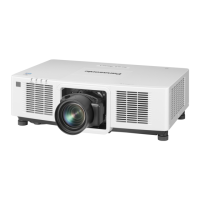
